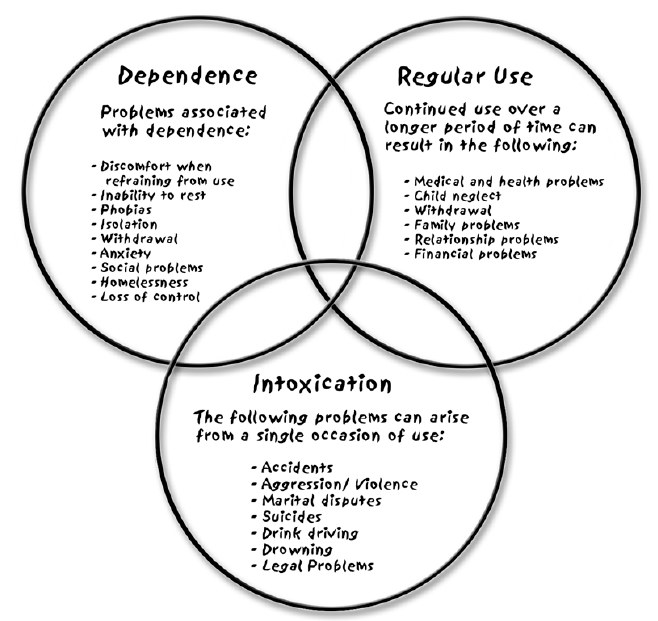Thorley's model of problematic drug use also assists our understanding of drug-related harm. Thorley's model identifies the possible problems associated with dependence, regular use and intoxication and the overlap between these factors.
The three patterns are:
- The immediate effects of use (intoxication): Often social and legal in nature including domestic and other violence, drink driving, road traffic accidents, suicides and drowning.
- Regular use: Continued use over a longer period of time can have negative health consequences; create social and relationship problems; and financial problems due to continued expenditure on drugs. These problems can occur even when AOD consumption is relatively moderate.
- Dependence: There is a continuum of dependence (see DSM IV & ICD 10 classifications) from mild to severe and dependence has biological, physiological and psychosocial dimensions. For young people there might also be developmental implications. Dependence is potentially harmful in all aspects of a person’s life.
It is important to remember that the majority of young people will not experience problems related to dependent use. Most of their difficulties will arise from intoxication (using at hazardous levels) or regular use. Thorley’s classification of the three aspects of drug use that cause problems – intoxication, regular use and dependent use – is useful for thinking about the kinds of interventions that are necessary to reduce the types of harms associated with each type of use.

Thorley's Model of Harm (Australian Dept. of Health & Aging)
